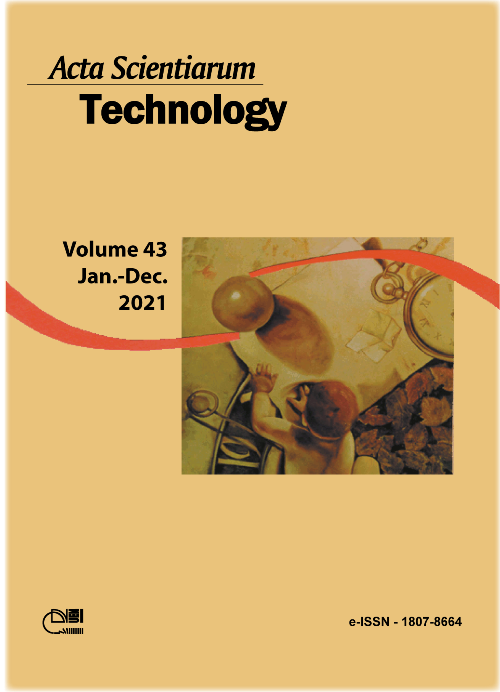Drying of foods under intermittent supply of microwave energy: proposal for a mathematical model
DOI:
https://doi.org/10.4025/actascitechnol.v43i1.51037Palavras-chave:
numerical simulation; microwave heating; non-equilibrium phase change; lambert´s law.Resumo
Intermittent microwave drying improves the quality of the dehydrated product, because reduces the effect of microwave hot spots. Mathematical modelling is essential to understand the physics of this drying process and to optimize the operation conditions. However, there are few modelling studies about intermittent microwave drying. This work proposed a mathematical model based on mass balances of liquid and vapor water in which a non-equilibrium formulation described the water phase change. The microwave heating, described by Lambert´s law, was accounting as source term on the thermal energy conservation equation. The numerical solution used the finite element method, and the experimental drying of potato samples validated the simulated drying. The values of moisture content and temperature obtained by numerical solution of the model showed good agreement with experimental data. From this, it was observed the presence of three periods in the drying kinetics: an initial heating phase almost without drying, follow by a phase with constant drying rate, and final a decrease of drying rate and temperature increasement. The model results showed that the interior temperature was higher than the surface temperature of sample, and there was water evaporation inside the potato. In additional, the gradients of temperature were reduced due to intermittency of the microwave power. This redistribution of temperature could contribute to the improvement of product quality during drying.
Downloads
Downloads
Publicado
Como Citar
Edição
Seção
Licença
DECLARAÇíO DE ORIGINALIDADE E DIREITOS AUTORAIS
Declaro que o presente artigo é original, não tendo sido submetido í publicação em qualquer outro periódico nacional ou internacional, quer seja em parte ou em sua totalidade.
Os direitos autorais pertencem exclusivamente aos autores. Os direitos de licenciamento utilizados pelo periódico é a licença Creative Commons Attribution 4.0 (CC BY 4.0): são permitidos o compartilhamento (cópia e distribuição do material em qualqer meio ou formato) e adaptação (remix, transformação e criação de material a partir do conteúdo assim licenciado para quaisquer fins, inclusive comerciais.
Recomenda-se a leitura desse link para maiores informações sobre o tema: fornecimento de créditos e referências de forma correta, entre outros detalhes cruciais para uso adequado do material licenciado.















